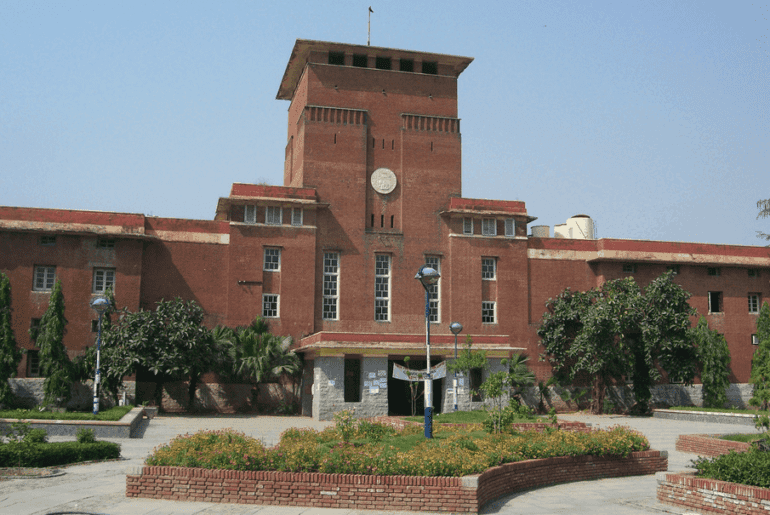Good-byes are the hardest; even harder with our professors. But what do we do when we find ourselves amidst the ad-hoc crisis?
What does college life mean to us? Does it mean romanticizing the red-brick walls? Or does it mean romanticizing the kurta– tote bag- chai inner core? Whatever it means, it surely stands for something unique for each of us. However, amidst the beauty of this chaos, lies a hard feeling of being lost, a feeling that could only be felt as words fall short to describe it. But how did we land up to this position? Is it because of the cute little fights over lunch breaks or are those never-ending assignments to be blamed? To be fair here, I feel these are the memories we take along with us and the reason to feel lost has another story behind it.
When we transition from school to college, we bring along a bag full of expectations. Apart from to-be-realized life-long friendships, we do expect to find mentors and guides who would not just be limited to the pale-yellow walled classroom but would bring solace when life happens to us. However, what happens if the “academic universe” decides to take them away from you? What happens when you find yourself alone again? What happens when you get the guidance you yearned for only to realize it to exist for a short-run? This is what it feels when we encounter the issue of ad-hoc displacement.
Currently, the Delhi University (DU) is underway with hirings for permanent positions. According to a report by Indian Express, as of April 2023, 4500-5000 permanent positions were to be filled and by then 100-150 ad-hoc teachers were already displaced in the process. The interview process for filling of the permanent posts began in the later half of 2022.
To give you a jest of how these applications are processed; the interviews are taken by a selection committee. Under the University Grants Commission (UGC) Regulations, this committee comprises of the principal of the college; the chairperson of the college’s governing body, or their nominee; the head of the department in charge of the subject; two V-C nominees; two external subject matter experts; and, in the event that any other members of the selection committee do not fall into one of these categories, an academician representing the SC, ST, OBC, minority communities, women, or differently abled categories.
If we go by the text-book, everything looks clean. However, I find myself incapable of judging whether things are fair or not. Due to this paucity, I will only be presenting you all with facts and figures and perhaps the questions that loom in every corner of my mind.
Recently, the sociology department of Indraprastha College for Women (IPCW) went through a whirlpool when five ad-hoc professors of the department, who were teaching at the college since years, all of a sudden found themselves out of job as the list with (new) permanent teachers was released. In a similar fashion, a (former) ad-hoc teacher, Pankaj Sarma of Kirori Mal College, suddenly found himself jobless, though he gave his ten years to the institution.
Similarly, late Samarveer of Hindu College, died by suicide as told by his family member due to his sudden removal from his job. Samarveer was an ad-hoc professor in the Philosophy department of the college. You name a college and this is the same story spinning everywhere.
To pin point here, if you get a sudden news that your professor resigned, it could either be that they finally understood what is about to unfold and voluntarily resigned or they met their fates of getting displaced. As sad as this reality would sound, this is what has been happening in the institution that is supposed to nurture the next-generation leaders, changemakers, and thinkers.
Even though I try to reel out of the pain of losing a mentor who not just guided me through the dreadful semester exams but showed me what I am capable of, what more I can achieve, and how much more power is to be realized as we move ahead in our lives, I stand dejected to know that my guiding light may have lost their shine. Though I know they are better-off and a place like this may not deserve them but I also know how blessed the students were to have a person like them in their lives. No words could give anyone a “job-security,” especially for a job they love. But as I come to the end, I could only hope to meet them again, perhaps while discussing our next adventure together.
Read Also: Social Media Vilification of Nerd Archetype
Featured Image Credits: The Quint
Ankita Baidya



